When It’s Okay To Act Out
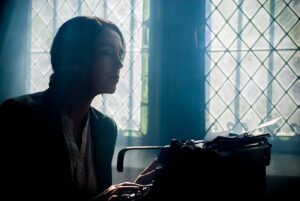 Okay, so you’re writing away and you have no idea what motivates your main character (or yourself at age twelve).
Okay, so you’re writing away and you have no idea what motivates your main character (or yourself at age twelve).
Or you can visualize your MC’s best friend, but you can’t hear her voice.
Or you’ve finally finished your fifteenth draft and you’re ready to share with your beta readers or your writing group or your editor or (gulp!) your publisher, but you have a niggling feeling there’s something missing.
Take a step back and try a couple of editing techniques that are a little different.
When we read, we tend to “hear” the words in our heads. If the story’s well-written, we “see” the settings and characters and we get lost in the story world. But there are a couple of techniques you can use that can help that reader immersion along.
- Reading aloud to hear how the words sound to a reader
- Acting the parts to make sure they’re realistic (or even possible)
- Cinematic technique – using camera angles to establish significance, mood and atmosphere
Let’s look at each of these techniques a little more closely:
Reading Aloud:

It’s a good idea to get comfortable with reading out loud. Often, as a writer, you’ll be asked to read your stories aloud, either in writer’s group meetings, workshops, book signings or interviews.
There are several reasons to do this while you’re in the writing stage as well:
- Your words will flow more evenly
- Dialogue will ring more true
- It will be easier to write the pacing and punctuation more accurately and effectively
- The story will have a more authentic, realistic feel for the reader
- It helps you to find and change awkward sentences and phrases
- It helps you to estimate the amount of time it will take your audience to read it or hear it if you’re doing a video or audio file.
But it’s not enough to simply read it aloud in a monotone. When we read a story, we don’t hear a monotone.
We hear the — breaks. And…pauses…
We hear the panic of a character in trouble. Fast-paced. Frenetic. Desperate.
We hear the long, slow, undulating waves of calm reassurance as a mother soothes a fretful child at midnight, murmuring soft lullabies carrying him off to dreamland.
Writers use punctuation and pacing — the length of sentences, the type of language, the song and the poetry of the words to convey much more than simply showing the events. The way the words are written also conveys mood, atmosphere and emotion.
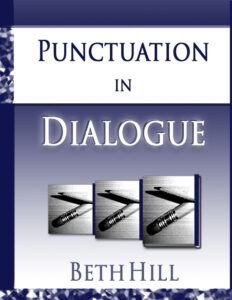 Reading (and writing) aloud requires you to know punctuation and pacing. For a wonderful e-book on punctuation, I recommend Beth Hill’s “Punctuation in Dialogue”. Not only does it help with dialogue, it’s also a great primer on punctuation in all your creative writing.
Reading (and writing) aloud requires you to know punctuation and pacing. For a wonderful e-book on punctuation, I recommend Beth Hill’s “Punctuation in Dialogue”. Not only does it help with dialogue, it’s also a great primer on punctuation in all your creative writing.
We need to learn to read (and write) our stories the way we carry on normal conversations, with all the starts and stops, broken phrases, and emotional colour we use in our everyday speech. We need to learn to be actors.
Acting Out:
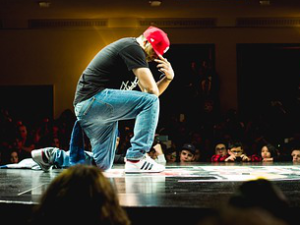 When we create our characters, even if they are ourselves at different stages in our lives, each one has a different voice. Each uses different speech patterns. Some speak slowly and deliberately, some are fast-paced and rush to get the words out. Some are listeners and don’t say much at all, but when they do, their words are worth listening to. Some are loud, some soft-spoken, some old, some young. Some have accents or mannerisms. Some have an extensive vocabulary or a poor vocabulary, some use expletives and curse words as a matter of course or for emphasis.
When we create our characters, even if they are ourselves at different stages in our lives, each one has a different voice. Each uses different speech patterns. Some speak slowly and deliberately, some are fast-paced and rush to get the words out. Some are listeners and don’t say much at all, but when they do, their words are worth listening to. Some are loud, some soft-spoken, some old, some young. Some have accents or mannerisms. Some have an extensive vocabulary or a poor vocabulary, some use expletives and curse words as a matter of course or for emphasis.
For each of these characters, your writing and your speaking should be different. You need to learn how to act out the dialogue so that it’s evident to a listener exactly who is the speaker. If you speak the dialogue aloud, it will be easier for you to write it accurately.
But it’s not just the words your characters speak. You should also try acting out their actions. All too often a writer will give a character inauthentic body language — a move or a facial expression that doesn’t fit with the action of the scene or is physically impossible in the given circumstances.
If you act it out, (and remember to close the door, so your family doesn’t immediately start calling 911 or the men in the white coats), you’ll have a far clearer idea of how that character moves, speaks and even thinks. Body language is often a clue to a deeper, more motivating psychological flaw, which could give you even better insight into the character’s goals and desires.

Once in a theatre production, I played a character who was epileptic. For the longest time, I couldn’t “find” her or what made her tick. Eventually, I figured out that she bit her nails to the quick, which gave me insight into how she saw herself. I realized that she was repressed and full of self-doubt. This changed how I had the character speak, move and interact with the other characters in the cast and was a much more effective performance. All because I found that one telling quirk.
Acting out your characters will help your stories tremendously, because it will help you to see and hear your characters and how they act with those around them.
Cinematic Technique:
Writing courses, classes, teachers and mentors all say the same thing: Show, Don’t Tell. Which is easy to say, but not always easy to grasp.
We’ve all been trained by Hollywood’s greatest to expect a certain type of cinematic experience in the novels and memoirs we read, so as writers, we need to emulate some of the same techniques they use.
One very effective way to show the reader what’s going on is to think of your scenes in terms of camera angles and focus.
A lot of films start with what’s called an “establishing shot”. An aerial view over water, a town, or other settings, to establish for the viewer where the action will take place. Often it will then zoom in on the main character going about his or her everyday business.
Cinematographers use focus and detail to convey the significance of clues, dialogue, personal habits or items of importance. When they zoom in, all extraneous detail disappears, and the camera shows a detailed description of the clue or item. Then they can pull back and show the character or item in their surroundings and how they relate to the rest of the scene.
For a brilliant book on how to use cinematic techniques to help your reader better visualize your story, I highly recommend C.S.Lakin’s “Shoot Your Novel”.
![]()
Exercises:

1. Speaking Aloud: Try writing a short scene in which a character is running away from something or someone scary. Use fast pacing, short sentences, broken sentences or phrases and pauses to help the reader experience the fear and panic your character feels. You can also use sharp staccato words and sounds, words that start and/or end with “t”, “d”, “p”, “c” or “k” to heighten the tension — “attack”, “cackle”, “tighten” and so on.
Now write a short scene where your character is relaxed. He/she is in a safe place where the atmosphere and setting are calm and there’s no stress. Use longer sentences, more musical words and phrases, more vowels and “m” and “n” consonants to smooth out the flow of the words — “murmur”, “undulating”, “overflowing”, etc.
Now read these scenes aloud as if you’re telling the story to a friend. Be aware of the sound, the tone and the “song” of your voice. You can even try recording yourself so you can hear if you’re reading in a monotone. When you read aloud, you’ll hear where your sentences are awkward or clumsy. Adjust your wording so that it provides maximum emotional impact for the mood you’re trying to create. Try different ways to say the same words. Emphasize different syllables and use your punctuation, italics and capital letters to replicate the sound of your voice.
Eg: “NO!” she cried, turning on him. “It’s not like that at all!”
Or: “No-o-o-o…” she moaned and sank to her knees. “It’s not like that. At all…”
It’s the subtle differences that bring your characters to life on the page.
 2. Acting Out: If you see a performance on tv or in a movie, or you see someone on whom you’d like to base your character, try copying them — how they move, how they speak, their unconscious habits, words they use as filler without thinking (such as: um, ah, y’know, like), the conversational quirks, habits, tics or stutters, starts and stops. Do they have physical habits, like playing with their hair, biting a lip, not looking anyone in the eye, chewing their nails? Do they have a habitual facial expression, like a squint, a sneer or a half-smile?
2. Acting Out: If you see a performance on tv or in a movie, or you see someone on whom you’d like to base your character, try copying them — how they move, how they speak, their unconscious habits, words they use as filler without thinking (such as: um, ah, y’know, like), the conversational quirks, habits, tics or stutters, starts and stops. Do they have physical habits, like playing with their hair, biting a lip, not looking anyone in the eye, chewing their nails? Do they have a habitual facial expression, like a squint, a sneer or a half-smile?
Of course, it only makes sense to do this when you’re alone. It’s also a good idea to keep a notebook with you all the time so that you can note down personal quirks you see that you might want to give to a character one day (and it’s a little more socially acceptable than copying people in public).
One advantage that physical copying has over simple observation is that it gives you muscle memory of what that action or habit feels like, so you can integrate it more easily with your writing whenever you visualize that character.

3. Cinematic Techniques: Rewrite your scenes as if you’re shooting a movie. Next time you watch a movie or tv show, do so with a notebook by your side. This works best if you can rewind the scene so you can go back and check. Sometimes camera angles change quickly, especially in high-action scenes.
Copy the camera’s different heights, distance and focus to create mood and atmosphere in your writing. Take note of how often they use a close-up to show specific details or pull back to show the overall scene. Use the concept of a close-up camera angle to zero in on the action of a scene in order to show the importance of the character’s choices and interactions. You can hide a clue in plain sight by not relating it to the rest of the scene. Just establish its significance by showing the details in your description so that you can bring it back later in the story.
How much more detail will you see if your vision is restricted to a small area than if you’re viewing it from a distance, or through smudged glasses or fog? How can you use this type of blurring to add to the suspense if a character is trying to see or hear something, but is frustrated by distance or something obscuring her vision? Or her hearing or other senses?
How far away does your camera or a character viewing the action need to be in order to see all of it or part of it, or maybe just enough to offer a clue or a key plot point? Did the cinematographer use a simulated character point of view to increase suspense? For example, when there’s a scary moment, and the hero is walking through the snowy woods, notice that the camera angle is at a distance, watching through the trees, as if from a stalker’s point of view.
Use your imagined camera angles to make your story more cinematic, and it will be easier for readers to visualize. Try writing the scene from different camera angles to see which one has the most visual impact.
Happy Writing!

Beverley Hanna
Trained as an artist in the late 1960’s and early 1970’s, I was one of the first creatives to be employed in the computer graphics industry in Toronto during the early 1980’s. For several years, I exhibited my animal portraiture in Canada and the U.S. but when my parents needed care, I began writing as a way to stay close to them. I’ve been writing ever since. I run a highly successful local writer’s circle, teaching the craft and techniques of good writing. Many of my students have gone on to publish works of their own. I create courses aimed at seniors who wish to write memoirs, with a focus on the psychology of creatives and the alleviation of procrastination and writer's block.
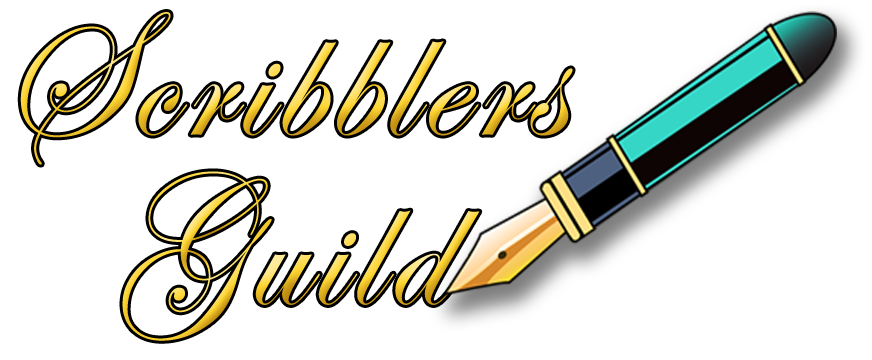
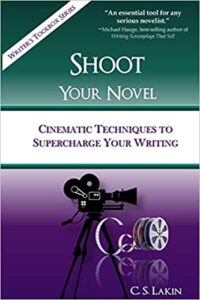
One Comment
Dor
Terrific post, Bev. It brings a lot of life into the revision process. And it sounds like fun.